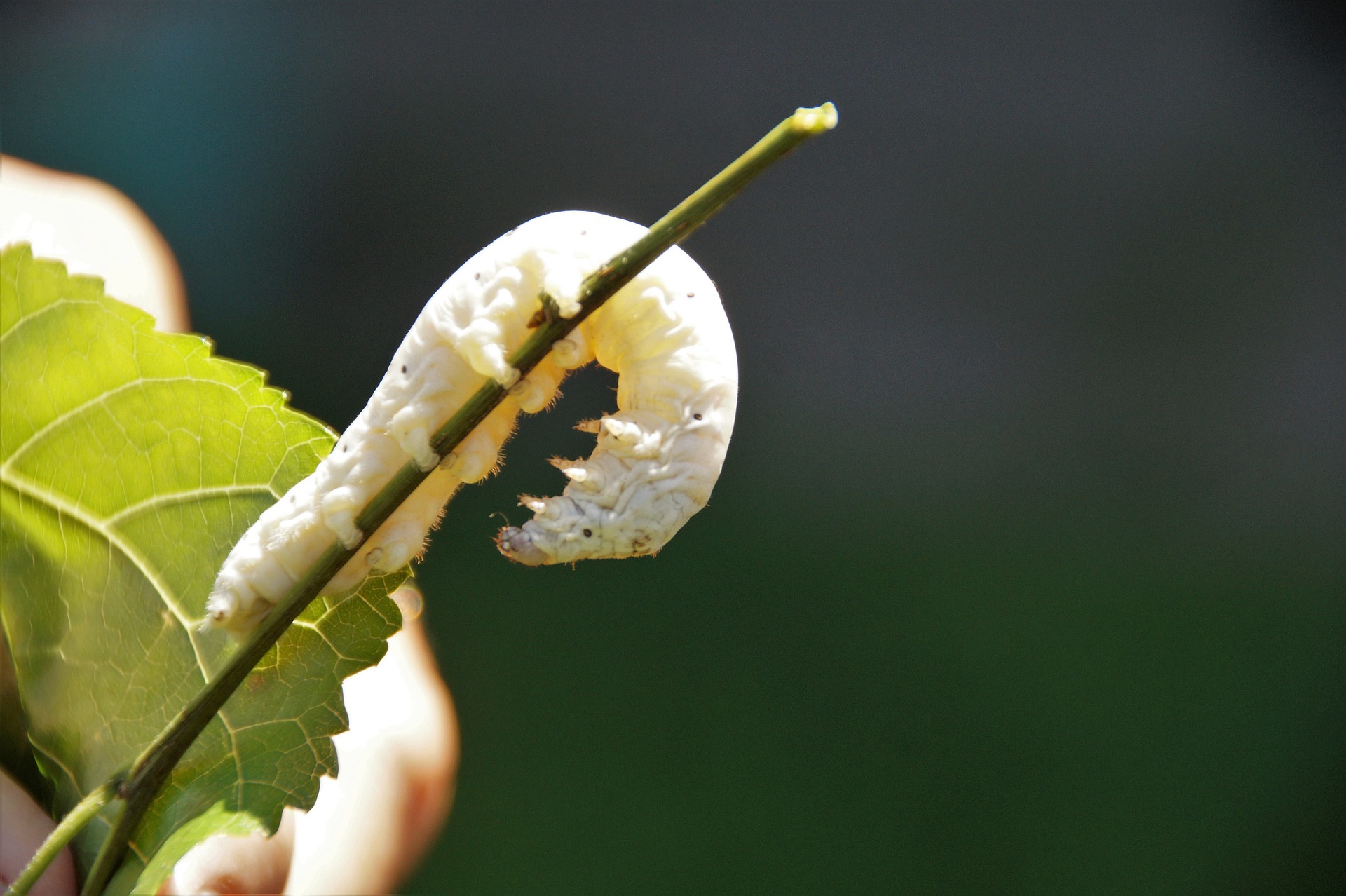Sericulture is the process of raising silkworms to get raw silk and is the topic of this series.
The feed that an animal is given to sustain its growth and reproductive potential is the single most crucial aspect of any animal production system. Since mulberry trees are the exclusive source of nutrition for silkworms, we will cover their cultivation in this first part of the series.
Historic background of silkworm production
Silk was a symbol of emperor homage in public ceremonies, according to the chronicles of Chou King (2200 BC). Migration helped the industry spread. Japan focused on the silk industry in the late 19th century, introducing processing machinery, improving techniques, and conducting intensive sericulture research. In India, silkworms were first domesticated in the Himalayas.
Mulberry trees
A mulberry tree leaf, specifically the white mulberry (Morus alba) leaf, is the food source for silkworms. Making sure good quality mulberry leaves are produced scientifically, is crucial for economically organised sericulture. Approximately 25 to 30 kilogrammes of high-quality cocoons can be harvested from a single case of eggs, but the rearing of the silkworms to spin those cocoons requires one tonne of mulberry leaves.
This plant has been grown in China for centuries and adapted elsewhere. It is a latex-producing woody plant, similar to figs and marijuana. The tropical tree bears red, black, or white clusters of seeds called mulberries. Black mulberry bears large purple fruit that resembles a long blackberry. Red mulberry produces soft red fruits, while white mulberry is used for silk. The red mulberry is called Morus rubra, the black mulberry is called Morus nigra, and the white mulberry is called Morus alba.
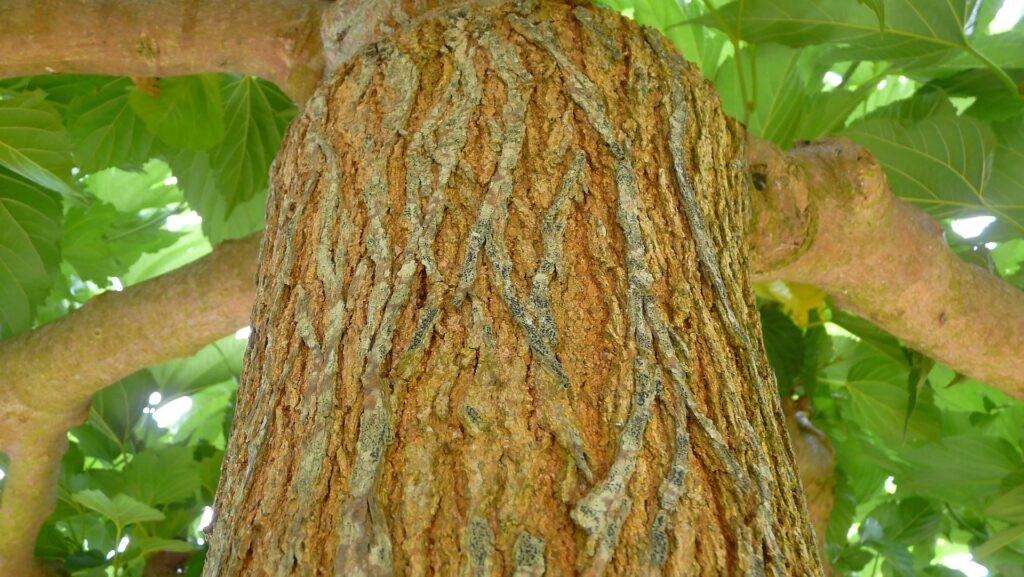
Mulberry bark has many uses, including in the production of paper pulp, as a purgative, and as a worm treatment. (Source: Pixabay by Stylidium)
Wide range of uses
The fruits can be used as pig food. Leftover mulberry leaves are fed to cattle to increase milk production. The leaves can improve egg production when used as a vitamin supplement in poultry diets. Mulberry bark is used for papermaking. The bark is both a worm treatment and a purgative. The fruits can be cooked into squashes, jams, jellies, and pickles. Mulberry wood is shock-resistant and hard. The sticks are used on fences or woven into baskets and silkworm trays.
How to grow mulberry trees
Mulberry trees prefer welldrained, fertile soil and can be planted in rows along the contour of less steep slopes (15%), while on steeper slopes (15 to 30%), the terrace system is used most effectively for single rows. High rates of soil erosion resulting in deficiency in nutrients, characterise extremely steep land. Preferred altitude Mulberry trees can thrive at altitudes up to 700 metres above sea level. Planting mulberries at a high altitude where frost is common is not economically viable.
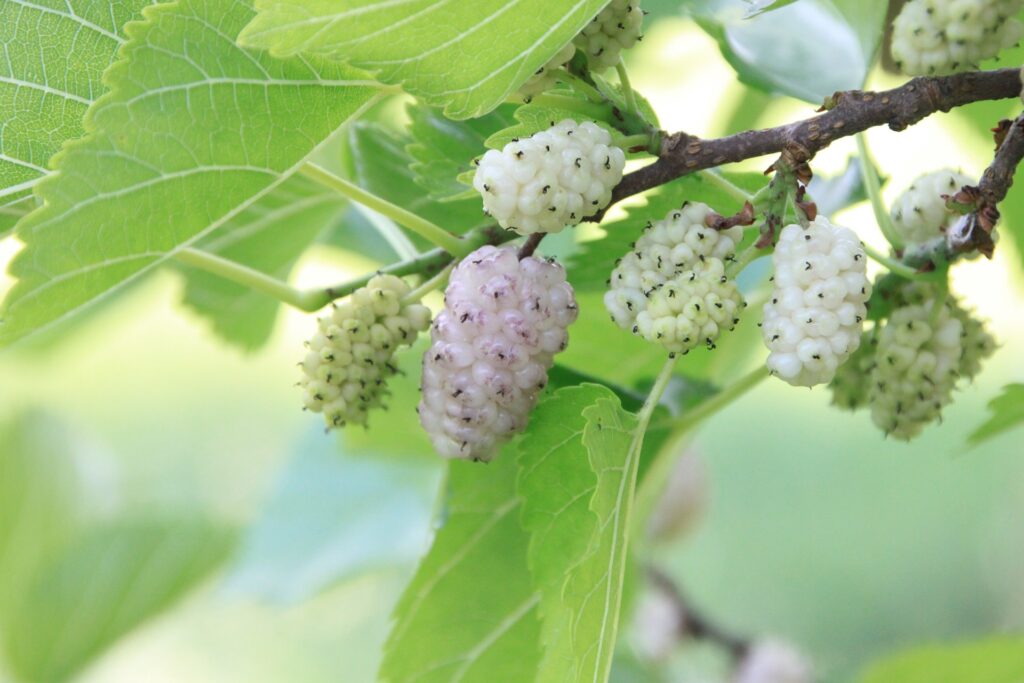
The fruiting Morus alba, or white mulberry. (Source: Pixabay by Emilian Robert Vicol)
Soil conditions
Soil is vital to plant health. Although roots make up only about a quarter of a typical seedling, they are often so finely divided that their mass exceeds the volume of air occupied by the shoot. As a result, there is a great deal of soil to root contact, demonstrating the plant’s reliance on the soil for support, moisture, and nutrients.
The composition of the soil affects a variety of plant characteristics, including:
- The capacity of seeds to germinate.
- The plant’s stature and straightness.
- Healthiness of the plant tissues.
- Hardness of the stem.
- Roots’ descending depth.
- The duration of puberty.
- Vulnerability to environmental stresses such as drought, pests, and diseases.
- The yield or growth rate. The quality of the soil in a mulberry field influences not only the growth and yield of the mulberry, but also the quality of the leaf, the rearing conditions of the silkworm, and thus the yield and quality of the cocoon. At least 50 cm of deep, friable, well-drained, aerated, rich soil is needed for mulberries.
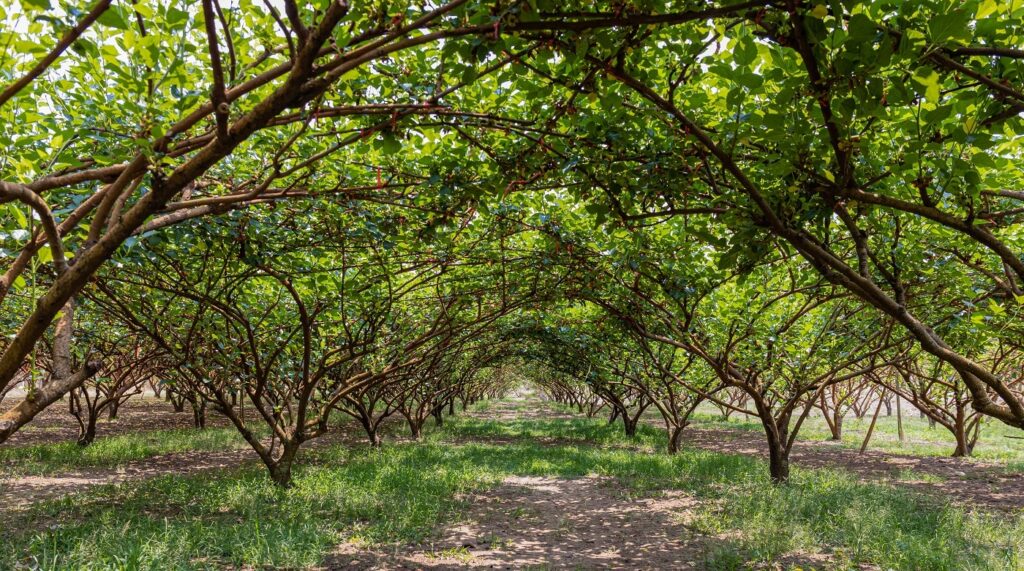
The fruiting Morus alba, or white mulberry. (Source: Pixabay by Emilian Robert Vicol)
The following factors affect soils:
- Fertility
- Depth and profile
- Soil texture
- Soil pH, temperature, and moisture
Soil fertility
Soil fertility is the soil’s ability to provide physical conditions favourable for root growth and enough water and nutrients to allow the crop to make the most of the area’s environmental features. Soil fertility is the most important factor in determining the yield as well as the quality of the leaves produced.
Depth and profile
Shallow soils do not allow crops to anchor and extract nutrients and water, and they are usually waterlogged or dry. Since mulberry is a perennial crop, it can root up to 4,5 to 6 metres in dry seasons. The coarseness or fineness of soil particles is called soil texture. Soil texture is classified based on its equivalent spherical diameter. Mulberries thrive in clayey loam and sandy soils.
Texture of soil
Soils must be well-structured and accept water and rainfall without crusting, eroding, or eroding to yield well. It should also hold moisture at reasonable levels.
Soil pH
Root morphology determines the plant’s pH response. The soil’s acidity and alkalinity should be acceptable. Mulberry grows best in slightly acidic soils with a pH of 6,2 to 6,8. Applying gypsum or sulphur to alkaline soils and lime to acidic soils can correct them.
Temperature of the soil
The temperature of the soil influences plant growth. Temperature dominates germination and growth in moist soils. This is because this temperature affects root growth, nutrient and water uptake, leaf expansion, and mulberry leaf yield. Mulberry trees grow best at 23 °C to 30 °C. High and low temperatures kill the plant. Organic matter increases specific heat (due to microbial reactions) and soil temperature. Dark soils absorb more heat than light soils, so they are warmer.
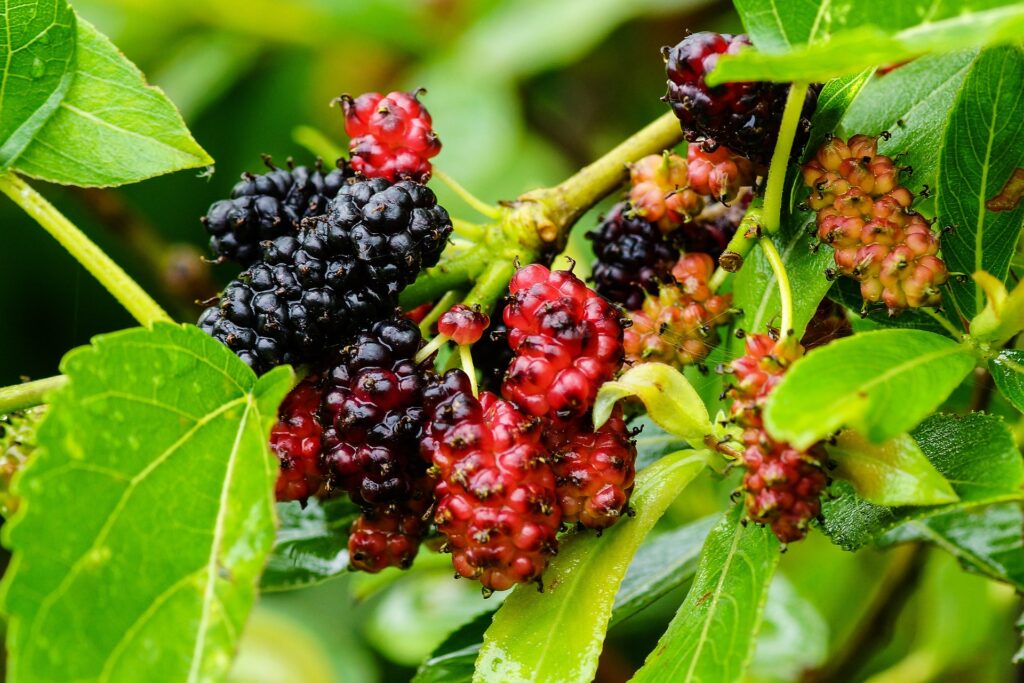
Morus nigra, more commonly known as the black mulberry, is a fruit that changes from a white to a red to a black hue as it reaches ripening. (Source: Pixabay by chulmin park)
Water requirements
Plant growth depends on soil moisture. Soil particles and organic matter determine how much capillary or hygroscopic water soil can hold.
Though drought-resistant, mulberry trees need water for growth and yield. They thrive in well-drained soils that receive 50 mm of water every 10 days in loamy soils and 15 days in clay soils. Finer soils hold more water. 50 to 60% (by weight) of the soil’s maximum water-holding capacity is ideal for mulberry growth. Water is crucial to plant physiology. It dissolves soil minerals and transports solutes through plant tissues. It increases the chemical reactivity of simple and complex compounds by allowing plant solutions and ionisation. It fuels photosynthesis.
Turgidity is necessary for cell function and protoplasm survival. All precipitation increases soil moisture, but not equally. Slower, gentler showers soak more water into the soil than heavy showers causing run-off. More water sinks below surface desiccation during a rainy period. Direct studies of soil moisture penetration and duration are best for measuring precipitation’s efficiency as a plant water source. Mulberry trees need 800 mm or more of annual rainfall.
Temperature
Biologic activity is minimal below 0 °C and above 50 °C. Mulberry thrives at 23 to 30 °C.
Fertiliser for mulberry
Mulberry cultivation requires the same manure components as most crops, but in much higher quantities. Mulberry, a woody plant, absorbs and uses fertiliser differently than annual herbaceous plants. It is grown for its leaves in terms of silk production, unlike other fruit trees.
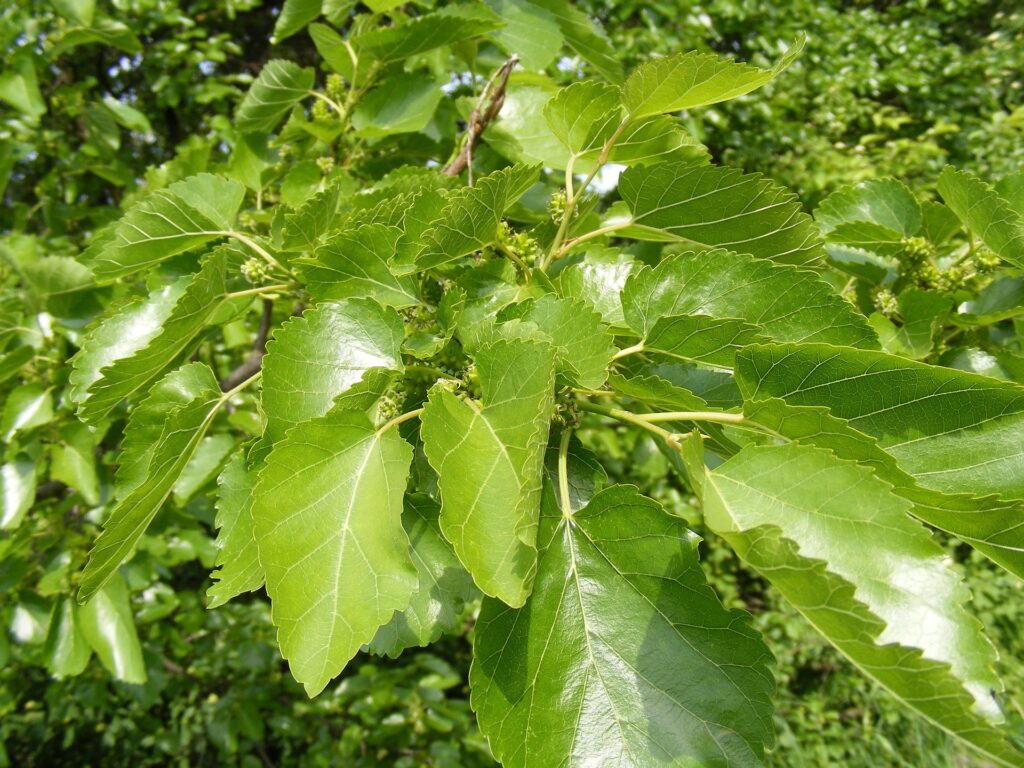
A cluster of green mulberry leaves. (Source: Pixabay by Emilian Robert Vicol)
References
Starovoytova, D. (2015). Mulberry and Silk Production in Kenya. Textile Science & Engineering. Volume 5. Pages 1-7.
SMEDA. (2020). Sericulture / Silk Production – Small Business. Ministry of Industries and Production (MoI&P) Government of Pakistan. Available at: https://smeda.org/phocadownload/OTC_Documents/ Sericulture%20-%20Silk%20Production%20for%20Small%20 Business.pdf
Duraiswamy, D. (2019). The Origin of Silk Production. Silk-Road Universities Networks Online Journal.
CGSpace. (2007). Sericulture in East Africa. Japan Association for International Collaboration of Agriculture and Forestry. Available at: https://www.jaicaf. or.jp/fileadmin/user_upload/ publications/FY2007/report2007_1_e.pdf

